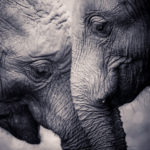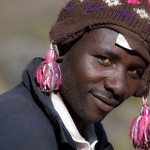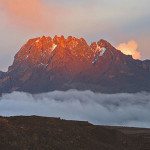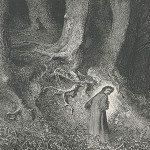If you look at Kilimanjaro’s history, one culture stands out as being intimately tied to the mountain: the Chagga. But the Chagga didn’t live around the foothills of Kili in isolation, and in fact, for several centuries, they weren’t a unified culture at all.
Much like their neighbors (and longtime adversaries) the Maasai, the Chagga peoples were divided into multiple clans, which were then further divided into mitaa, or petty chiefdoms. Today, these clans have consciously come together to form the modern Chagga culture. But as recently as the turn of the 20th century, they were at war with not only their neighbors, but with one another.
Each clan had a distinctive territory along the southern and eastern slopes of the mountain. Natural boundaries—including ridges, rocky outcroppings, and ravines—usually defined the borders between one clan’s land and another’s.

Today we think of the Chagga as one people, but formerly, 15 separate Chagga clans battled for control of Kilimanjaro’s slopes
By Mount_Kilimanjaro_Peoples_map-fr.jpg: *Mount_Kilimanjaro_Ethnic_Groups_map-fr.svg: Sémhur derivative work: Sémhur (talk) derivative work: Furado (Mount_Kilimanjaro_Peoples_map-fr.jpg) [CC BY-SA 3.0 (http://creativecommons.org/licenses/by-sa/3.0) or GFDL (http://www.gnu.org/copyleft/fdl.html)], via Wikimedia Commons
Starting on the southwestern side of the mountain, with the territory of the Kibongoto, 15 different territories were carved out along the slopes (ending on the northeastern side of the mountain with the territory of the Usseri clan).
All the clans except the Mamba had a stretch of land that reached from the forest line down to the plains that surrounded the base of the mountain (Mamba land ended on the slopes), and the entire mountain was criss-crossed by a network of tracks, many of them originally carved out by heavy herds of elephant and buffalo.
Three main footpaths connected the territories, each at a different altitude. The middle path was almost always the most convenient and best maintained, but it posed a risk: it was most likely to go through the heart of neighboring chiefdoms, and if political tensions were high—which they often were—a traveler might set off on that path…and never return.
But the upper and lower paths, if slightly inconvenient, were certainly well-trodden; peace between the various Chagga chiefdoms rarely lasted for long.
Chagga chiefs were enormously powerful, both within the borders of their territories and outside them (they were continually conquering and reconquering one another’s land). Without their say-so, no one could pass through their lands…including missionaries like Johannes Rebmann, the first westerner to “discover” Kilimanjaro. On a trip to the interior of Tanzania, Rebmann was essentially robbed by wily Chagga chieftains of all the goods he’d brought with him for barter, and was forced to turn back to the coast. The experience was apparently terrifying; he was reportedly in tears before it was over, and never returned.
Today, the mountain is a much more diverse place. Not only have the clans come together under the umbrella of Chagga identity, members of tribes from all over Tanzania live and work on the mountain.
Though the clans are more or less a thing of the past, their memory lives on. Do “Marangu” and “Machame” sound familiar? Once they were rival clans, battling each other for superiority…and now they’re routes to the top of the mountain!

Thomson Safaris guest, Roger Pelissier, photographed these stunning portraits of his porters and their respective heritages at the conclusion of his trek.






